As I already explained in my article two weeks ago, the Dutch people have something with the color orange. Apart of that, I think the color is quite cool too. It’s bright and very good visible. That’s probably also the reason why many rescue workers and people who easily can get into dangerous situations, wear orange signal clothing. Lifeguards use orange, most probably because it stands out to the blue or green color of the sea. Orange G-Shocks are not very common, but in September 2008, Casio released the über-cool Men In Rescue Orange (MIRO) series in Japan, and the Rescue-G series (same Master of G models, but non-Atomic). For those who read my 50 Gs weblog from the beginning, they know how much I love these two series. In the past I had quite some friends, who were lifeguards. Once a year I am also surrounded by lifeguards, police and other safety workers, as I am the rider of the Broom Bike (Vélo-Balai or Bezemfiets) at the annual Coast Marathon, also known as Marathon Zealand. Normally at such events there is a car marking the end of the race, but since the coastal marathon goes over beaches, through forests and over dunes with a lot of stairs, cars can’t get everywhere.
In October 2014 Casio released another orange themed series, called Rescue Orange Series. In contrary to the Rescue-G and the MIRO models, this series consists of basic models, two digital and three analog. The GW-M5610MR-4 has been reviewed last week by Christofono, this week I feature here the other digital model, the DW-D5500MR-5CR. The other analog models were the AWG-M100MR-4, AWG-M510MR-4 and, in my opinion the best looking analog, the GA-110MR-4. Actually I first bought this D5500MR model around the same time Christofono bought the M5610MR, but after seeing several pictures of that orange square, I decided I wanted to have it too, so I have them actually both. If I have some extra funds (which I unfortunately don’t have at the moment) I would also like to have the GA-1100MR-4 model too. By the way, the GW-4000R-4A and GW-A1100R-4A models of May 2014 are not part of any orange themed series. They happen to have the R after the model probably just to distract you.
The DW-D5500 is quite a new model, which first appeared as a basic model in May 2014. It has a new 3433 module, which is shared with the DW-D5600 models, which were also released first in the same month. Since the long speculated return of the 5500 model in 2006, there have been mostly been solar powered G(W)-5500 and GW-5510 models (the GW-5510 models differ from the GW-5500, because they are Multiband 6 instead of Multiband 5) until the introduction of the DW-D5500*. This is, in my opinion, a bit odd, since I remember that Casio had the ambition to make all forthcoming wristwatches at least solar and if possible atomic in the early ‘00s. With a new battery powered model, 9 years after the first solar version appeared on the market, this is at least strange. The good thing is, that the 3433 module is relative good equipped for a basic model, specially considered it is also used in a 5600 shaped model. So, let’s take a look under the hood and specially compare it to the current basic DW-5600 module, the 3229 and see how it is improved.
*the GLX-5500 and GLS-5500 models were battery powered models.
The 3229 of the DW-5600 has no World Time Mode, while it’s present on the 3433 module, so already in Timekeeping Mode (HT) the 3433 module distinguish itself from the good old 5600. To set the time right, you first probably need to set the watch to the right UTC Offset and if needed apply DST. Mine was never set and showed a date somewhere in 2005 and the UTC Offset was +9. For those who are familiar with Japanese watches or were readers of the fantastic “GMT +9” weblog, which unfortunately got hacked and never was retrieved, GMT +9 is the Japanese Time Zone. In my case I had to set it to GMT +1 and applied DST, resulting in an offset of +2.0. Nice is, that you can scroll forward and backward in the Timekeeping settings with the upper and lower right buttons. You can switch between 12-hour and 24-hour Timekeeping by pressing the lower right (SEARCH) button in normal Timekeeping Mode. Personally I rather set the 12- or 24- hour Timekeeping somewhere in the cycle of Time Setting Mode.
To switch between modes, you press the usually MODE button (lower left). The first mode you encounter is the already mentioned World Time Mode (WT). With the lower right (SEARCH) button you can view times in other cities, while scrolling eastwards. As this is a 4-button operated watch, you can’t scroll westward, because the upper right button is the EL Backlight button. The World Time Mode can show you time in 48 cities in 29 different Time Zones. The DST does not change automatically and need to be toggles on or off by pressing the upper left (ADJUST) button. As there is no guarantee that DST will always be applied everywhere where it is nowadays until 2099, this function can of course not be automated.
The next mode is the Stopwatch mode. It is just a 24 hour type which can start, stop, resume and split measured times. Of course Casio wanted to improve all modes on this module, so an Auto Start function is also included. With Auto Start, the Stopwatch function will first count down 5 seconds and give short beeps in the last three seconds. When reached 0, a long higher pitched beep sounds and the Stopwatch is automatically started (sounds like bip, bip, bip, beeeep).
The Countdown Timer is the next mode on this watch and after Time Keeping, my most used function of G-Shocks. It’s a full equipped 24 hour Countdown Timer. You can configure it as a one time Timer, but also as an Auto Repeat Timer. As icing on the cake, this mode also has a Progress Beeper. When you have toggled on this function, the watch begins to beep during a Countdown operation at strategical times, starting 5 minutes before reaching the target time. First at the whole minutes, then 30 seconds before the end and finally also the last 10 seconds. I always liked this function and used this a lot in the past, as you sometimes not only need to know when a certain procedure ends, but also want to know that the ending gets nearer.
Finally there is the Alarm Mode. While the basic DW-5600 has a single Alarm, this DW-D5500 has three Alarms, one of these is a Snooze Alarm. Like on most G-Shocks, the Alarm can not only be set as a Daily Alarm, but also as a Date Alarm, by setting a date. If you leave the Day or the Date blanc, you get respectively a 1-Month Alarm or a Monthly Alarm. Of course the Hourly Time Signal (what happened to the old Hourly Chime name) is also present on this watch.
Besides all these modes, there are also some hidden features on this watch. It has, like the DW-5600, a Flash Alarm. When toggled on, the EL backlight lights up briefly, every time an Alarm tone sounds. Also this watch has an Auto-Illuminator, or as it now is called, an Auto Light Switch, so that the watch automatically lights up when you hold your arm parallel to the ground and tilt your wrist about 40º toward you (the usual gesture you make when you watch the time on your watch). Although this is a cool function, I rather discourage to use this function too many times, as Auto Illumination also can happen when it isn’t needed (or instance while driving your car) and the Illumination consumes quite some energy, so that repeated use will eventually lead to shorter battery life. Speaking of the battery, the module is powered by a CR2025 battery, which has a significant larger capacity than the standard CR2016, which is usually used in basic G-Shocks. If you do not use the EL Backlight and Alarms too much, the battery life can easily surpass a 10 year lifespan. A last feature you find on this watch is the Mute function. When press and holding the MODE button you can turn the Button Operation Tone on and off. A small indicator on the bottom right of the display shows when the Button Operation Tone is muted.
Well, this was a lengthy description of what’s on board of this DW-D5500 with the new 3433 module, but you might be maybe more interested about the watch in general. Like every 5500 type G-Shock, this watch is also very comfortable. Maybe this type of G-Shocks are even the most comfortable G-Shocks around. The wider band and the relative thin case make it a pleasure to wear. With a weight of less than 56 gram, you hardly notice it’s there, but still this is a very well equipped watch. The buttons are Mud Resist. Actually, the black parts of the bezel are not really the buttons, but softer parts of resin, which allow you to operate the buttons underneath. The operation of the buttons is a bit harder than with conventional buttons, but not as frustrating hard as on a new G-9000 type Mudman, which will give you well muscled fingers after prolonged use. I bought this watch in the US for less than $79.-. You can see that it is an US model by the model number that ends with CR. Unfortunately this model wasn’t available in Europe, but you still can find this DW-D5500MR-4 in Asia and the US for a price around $100. For this price you get a very well equipped comfortable G-Shock. Before I conclude, I specially like to thank Riley of My G-Shock for making this third Orange Themed article of April possible. And if you like this watch and the vibrant color, I can specially recommend to look out to next weeks article.

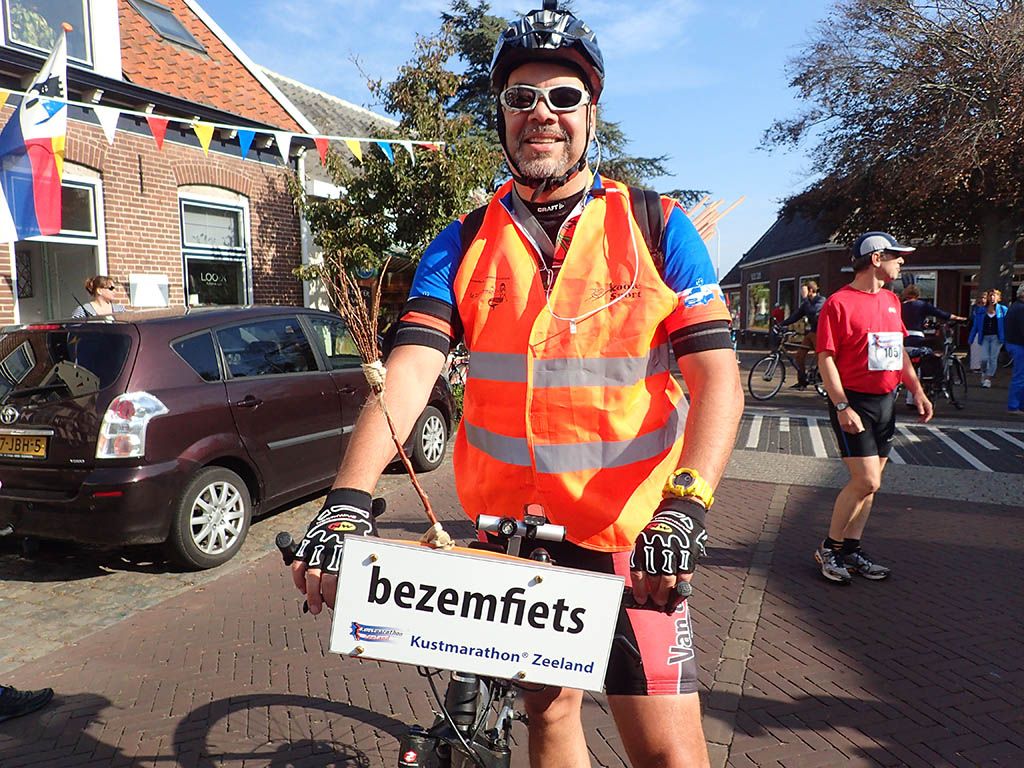
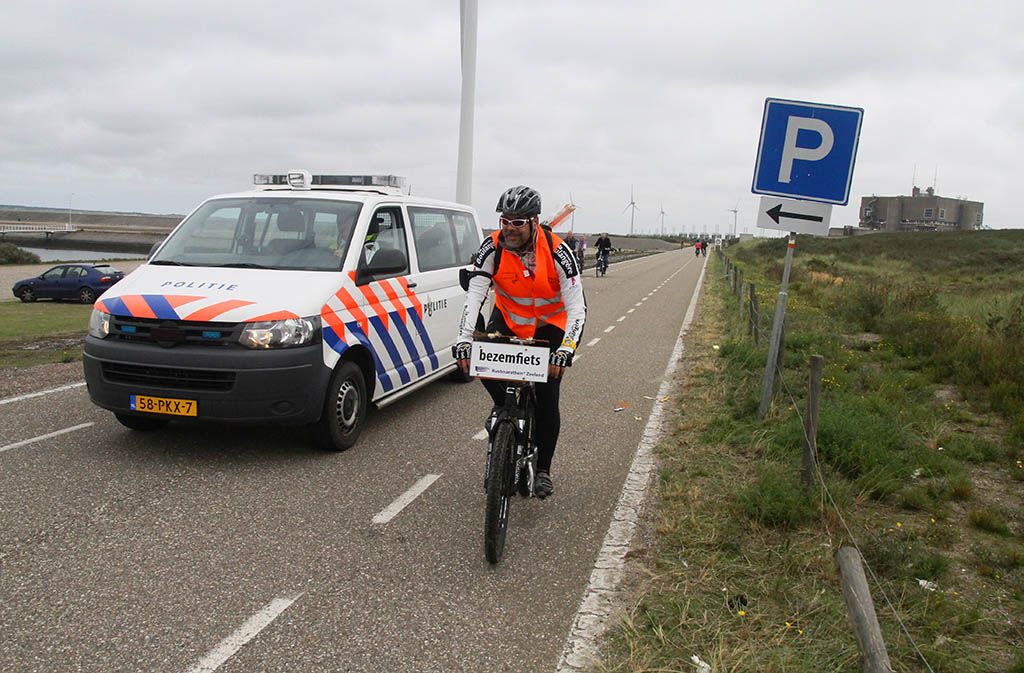


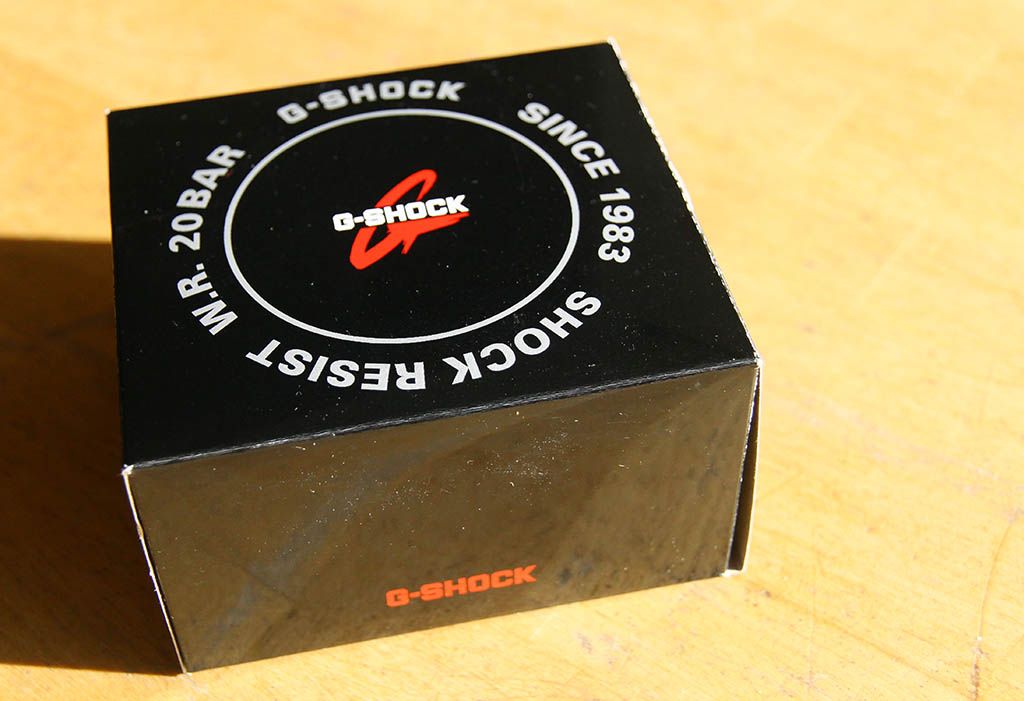

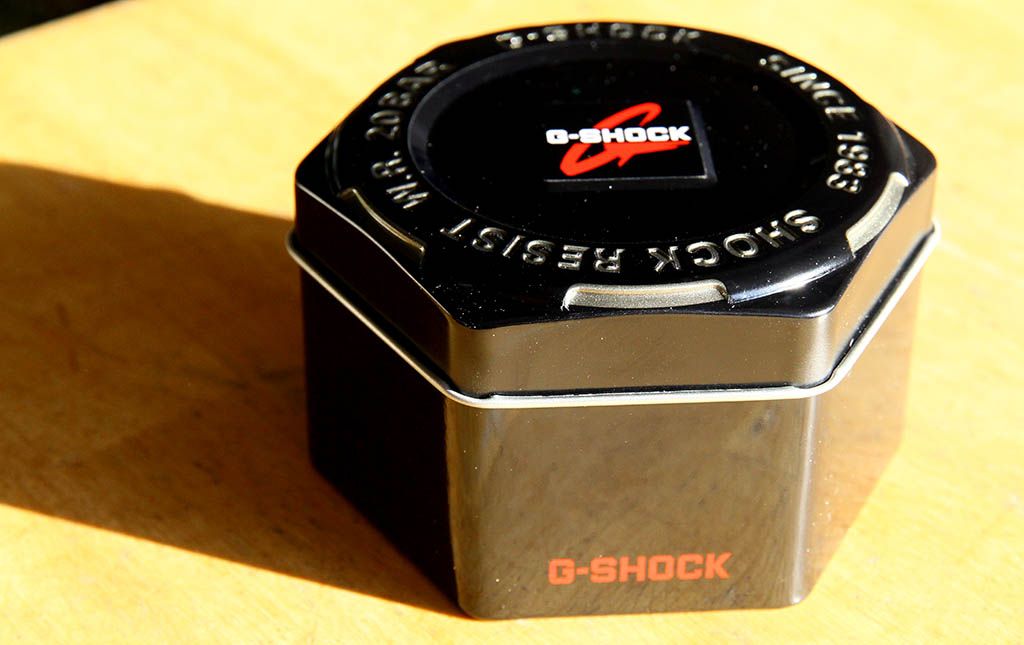

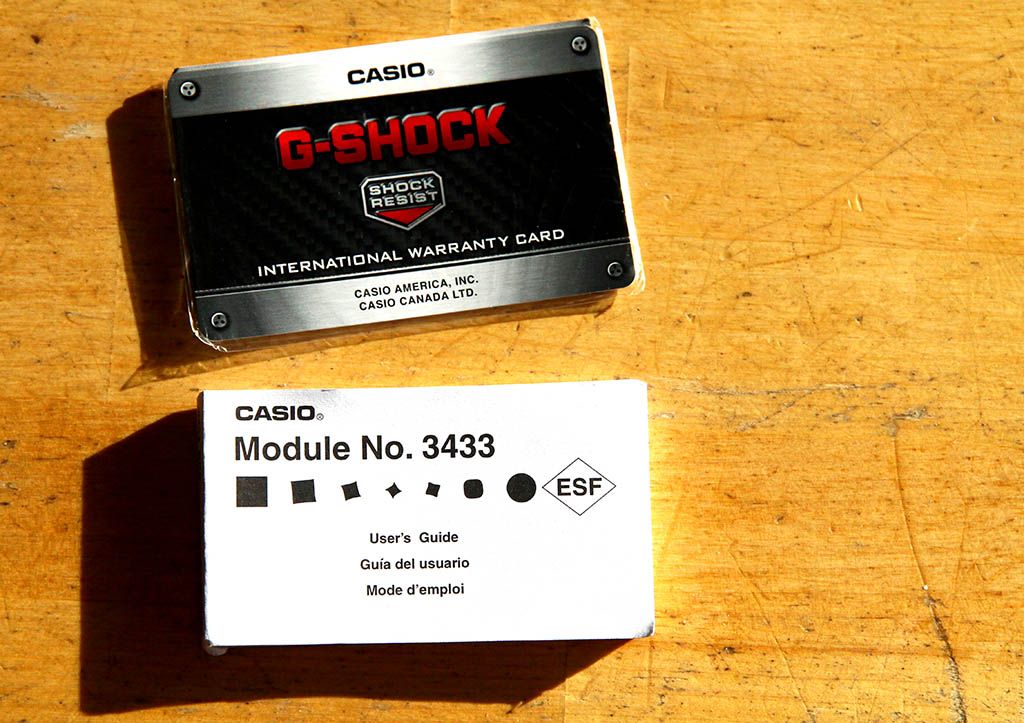
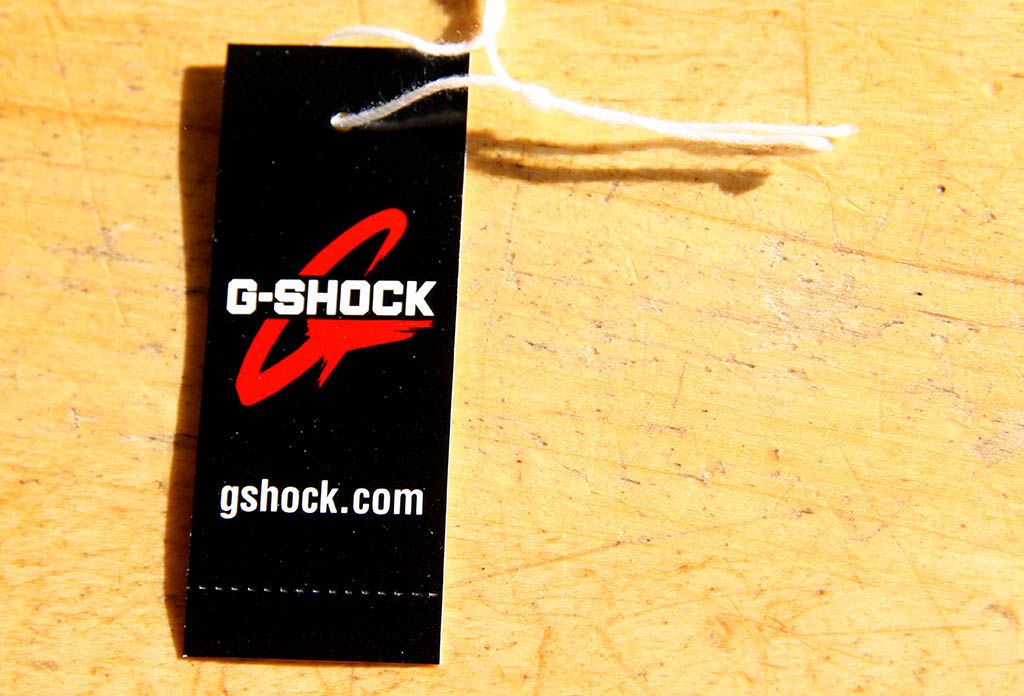
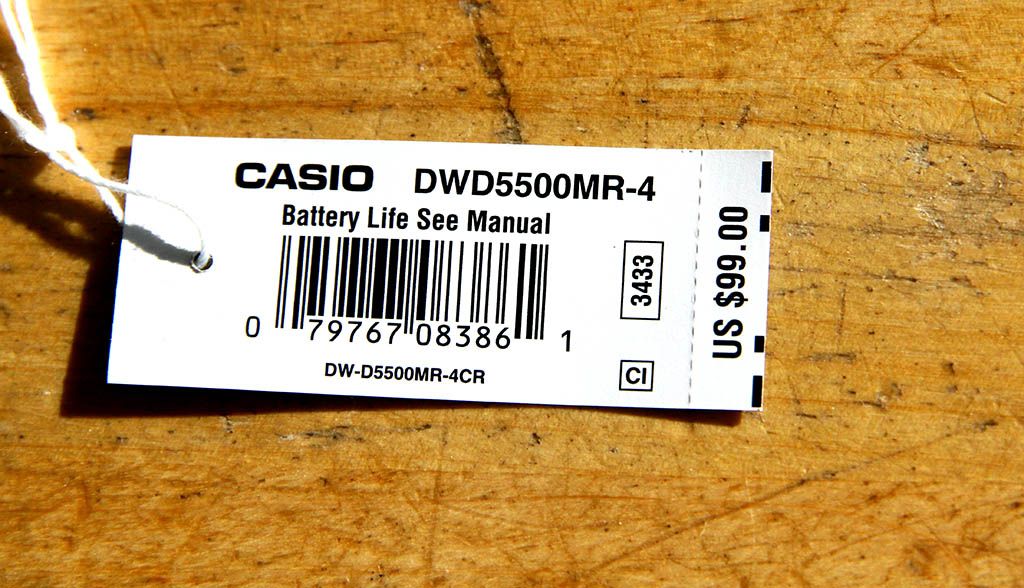




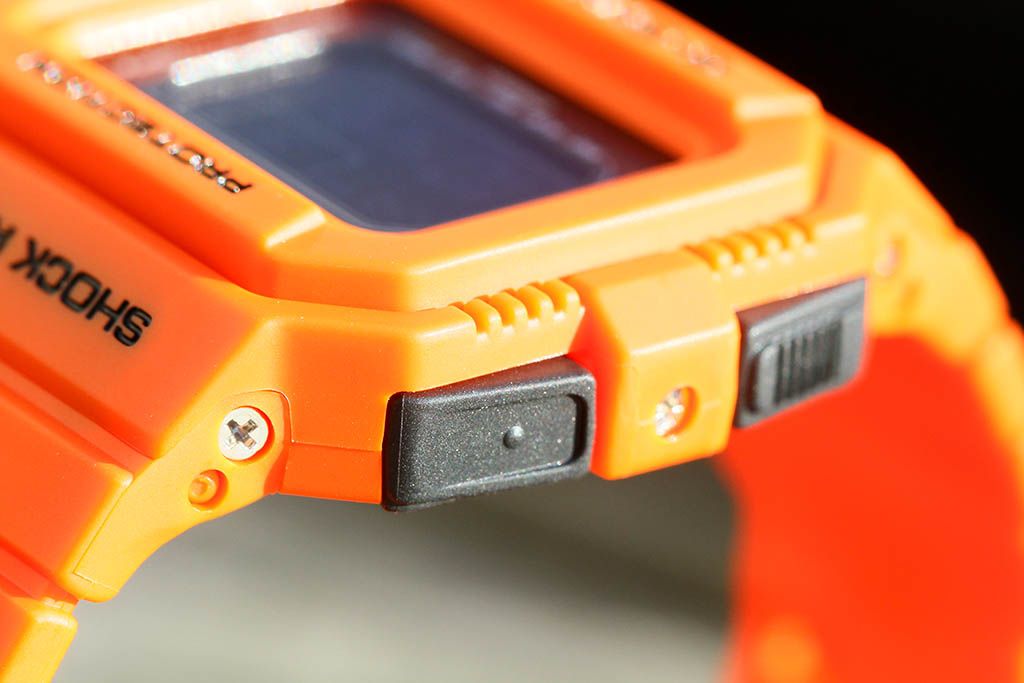

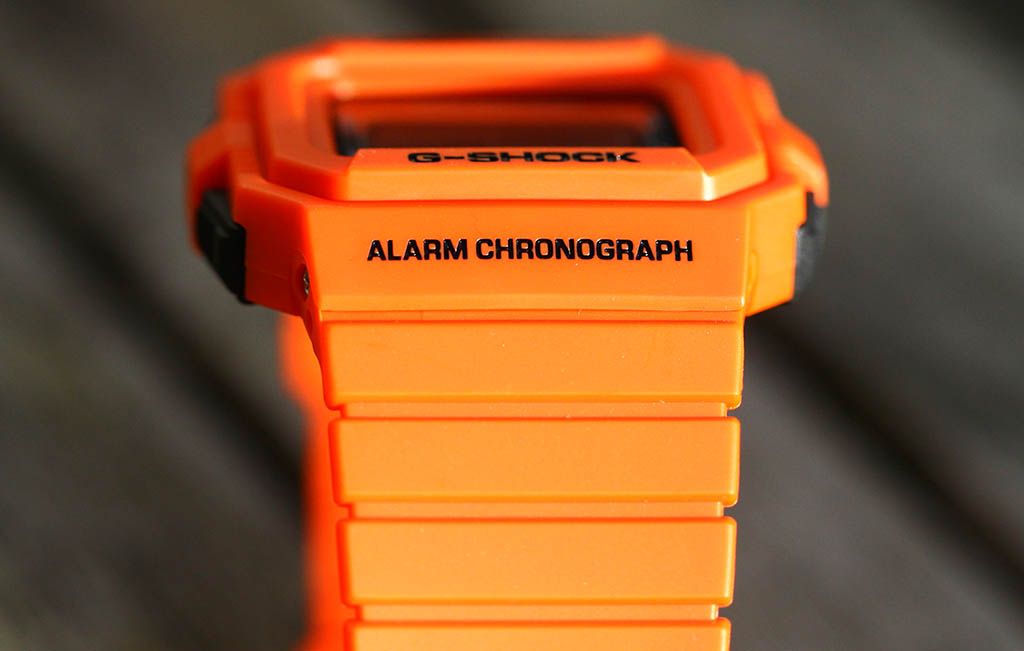
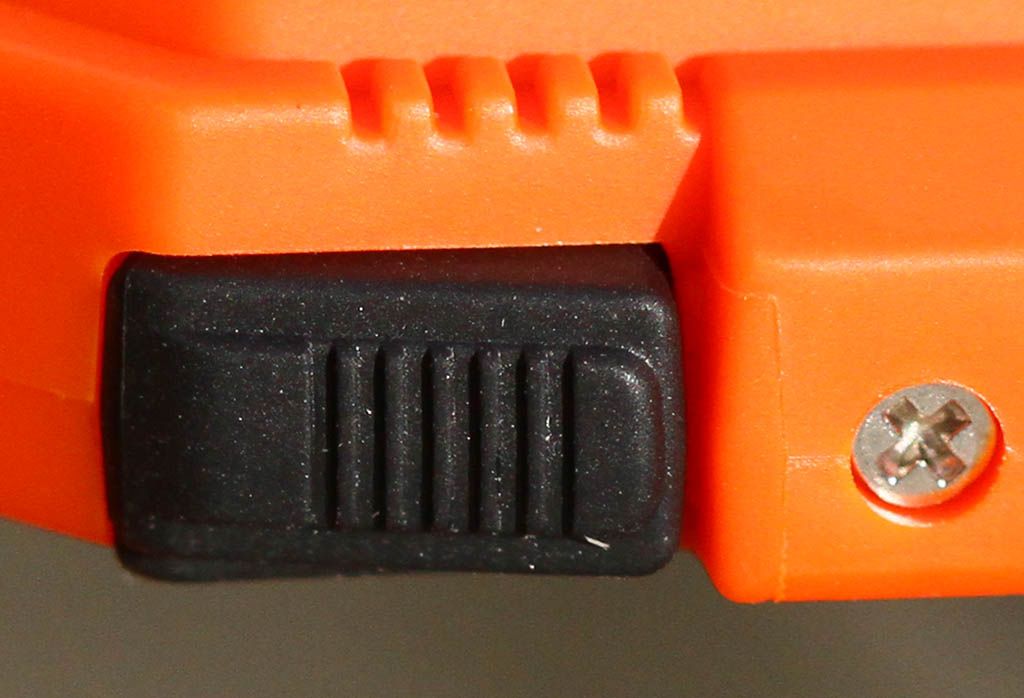

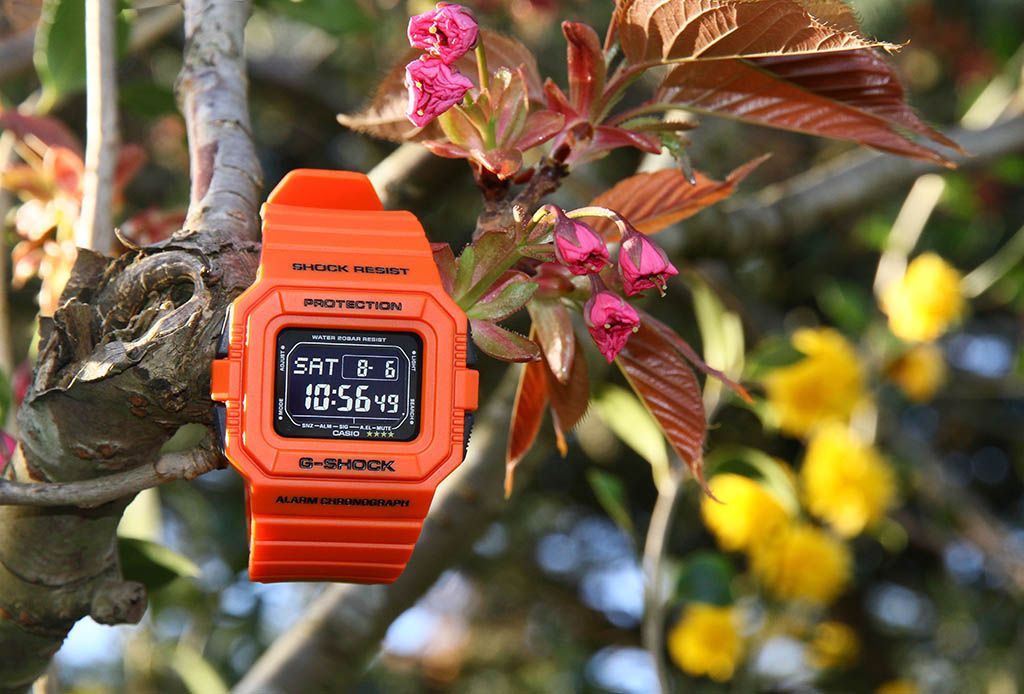
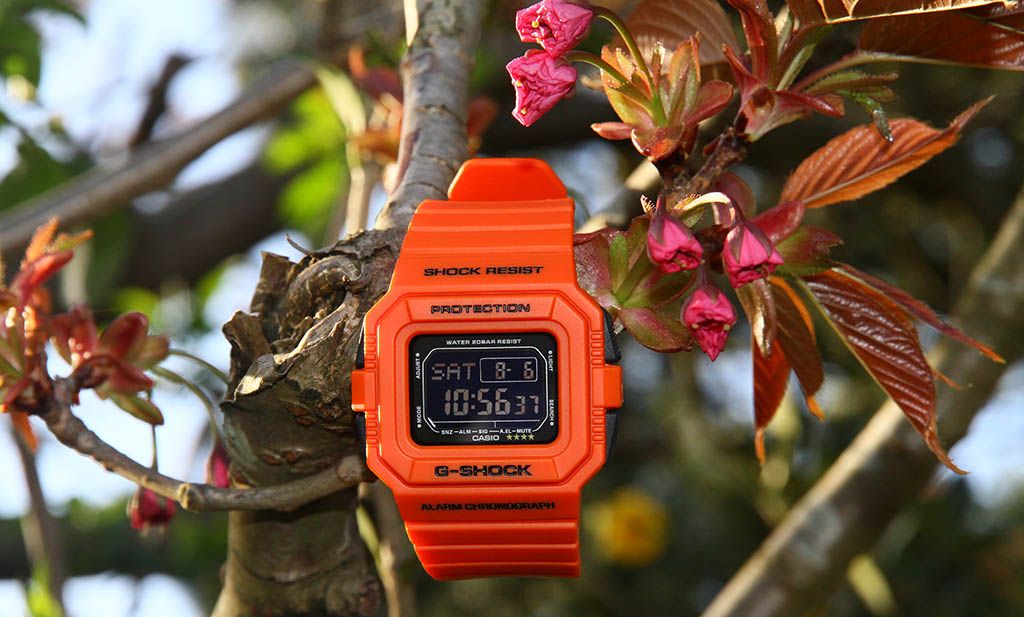

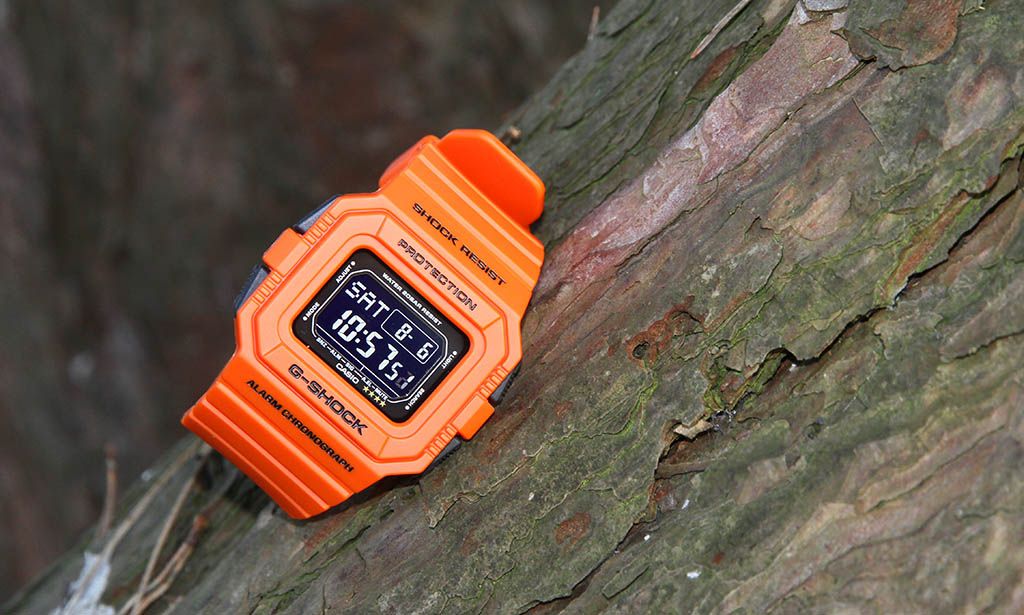

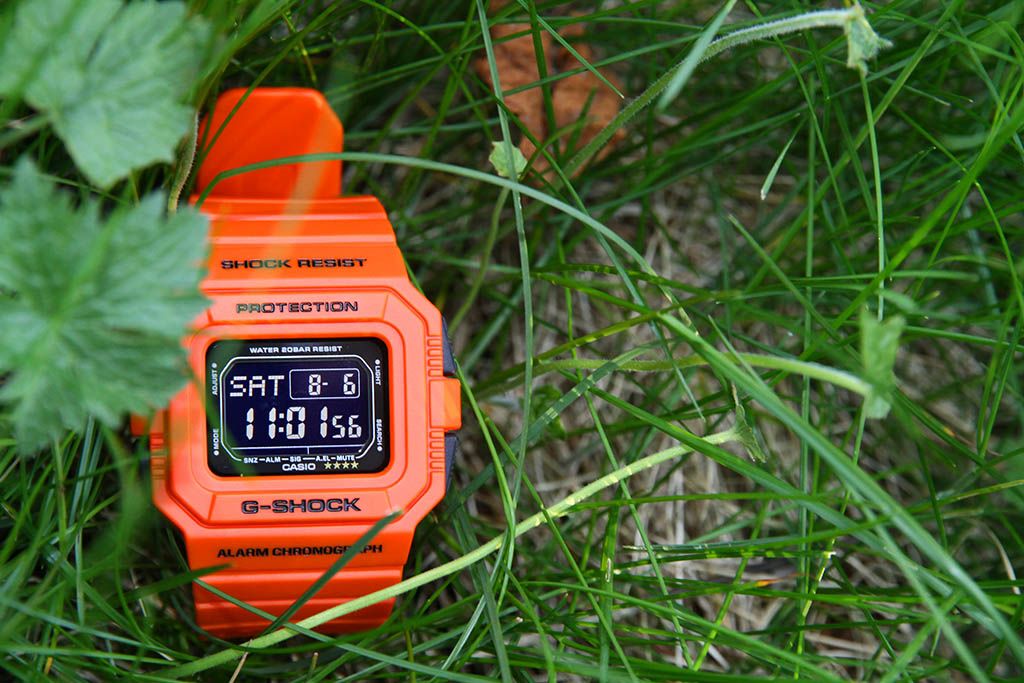
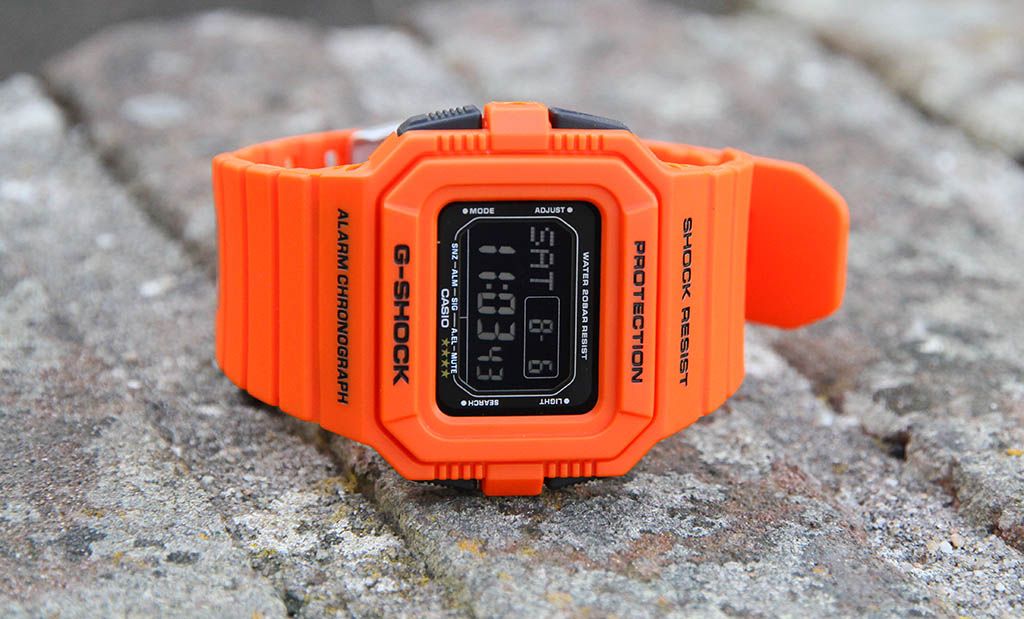



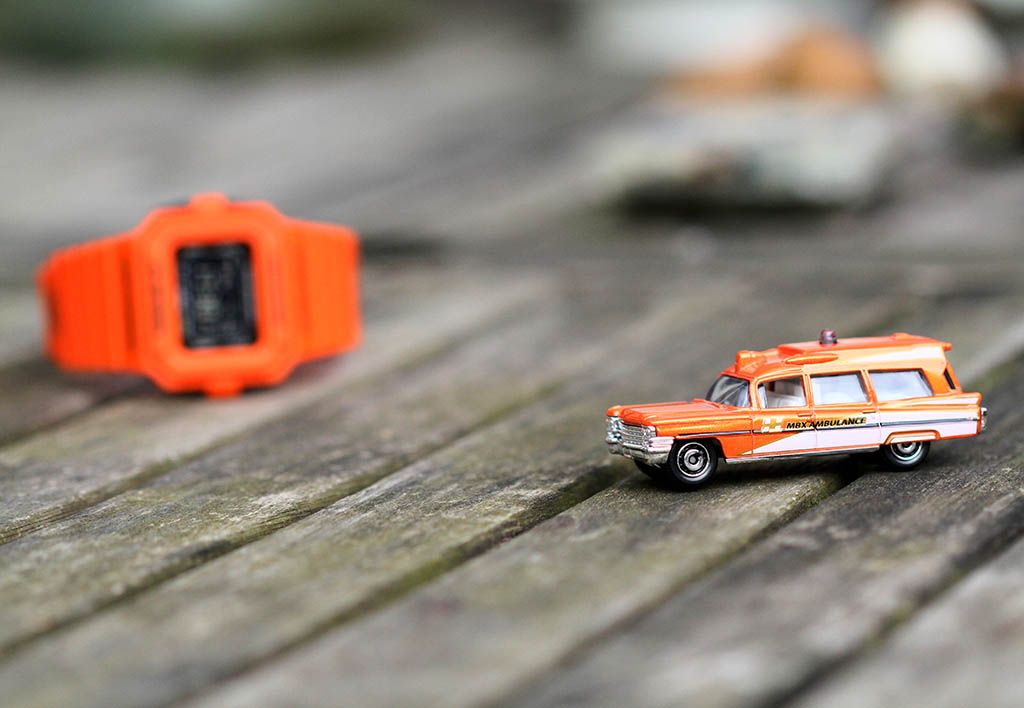
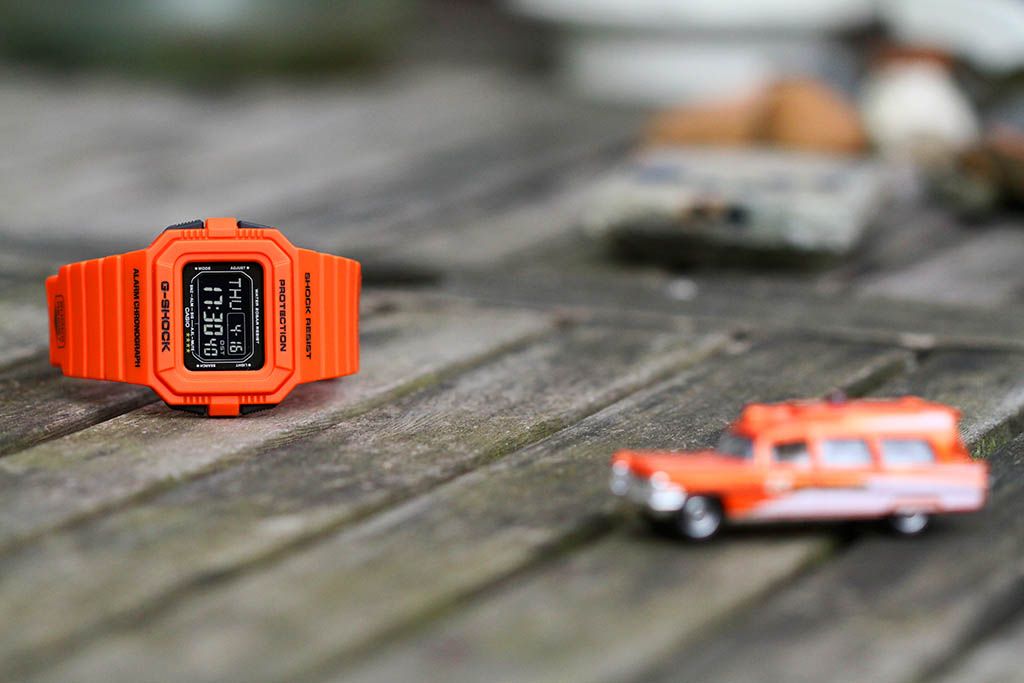


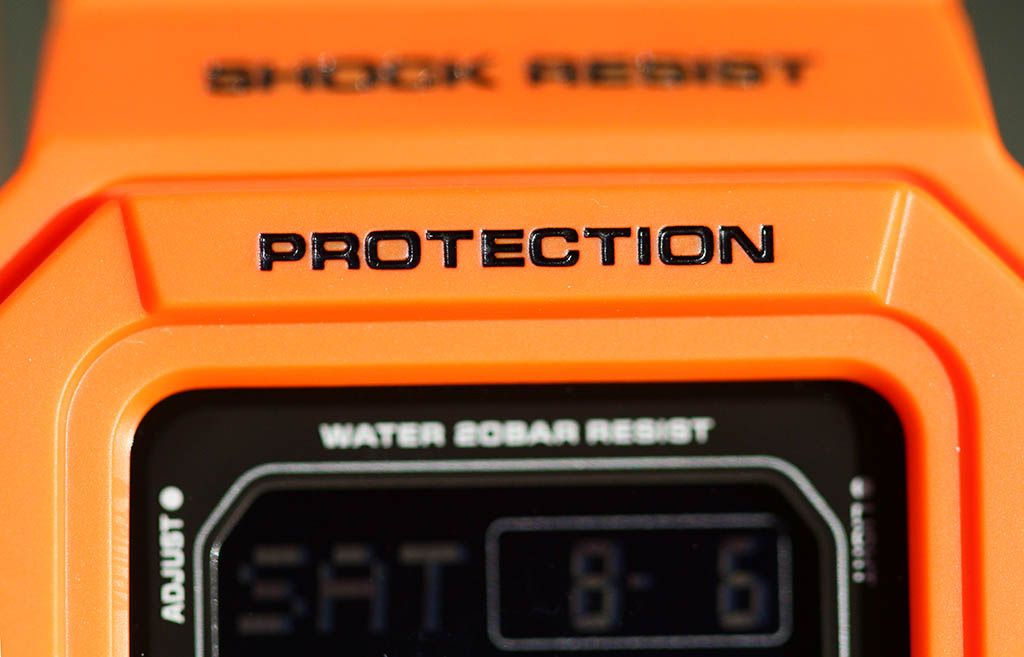


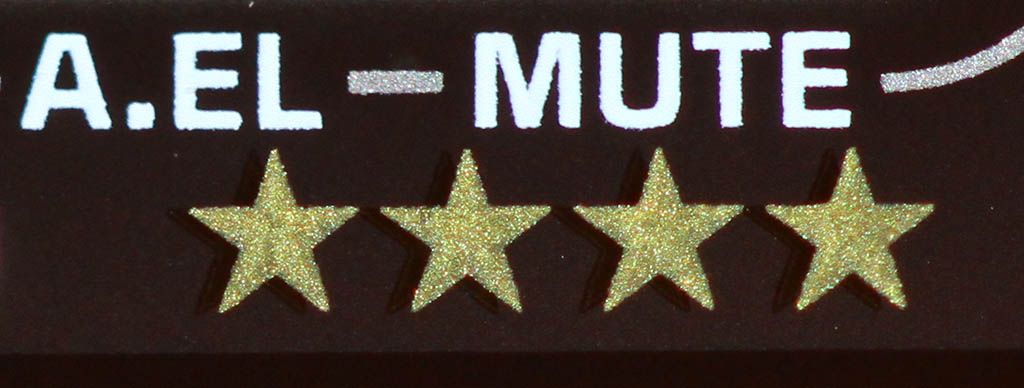
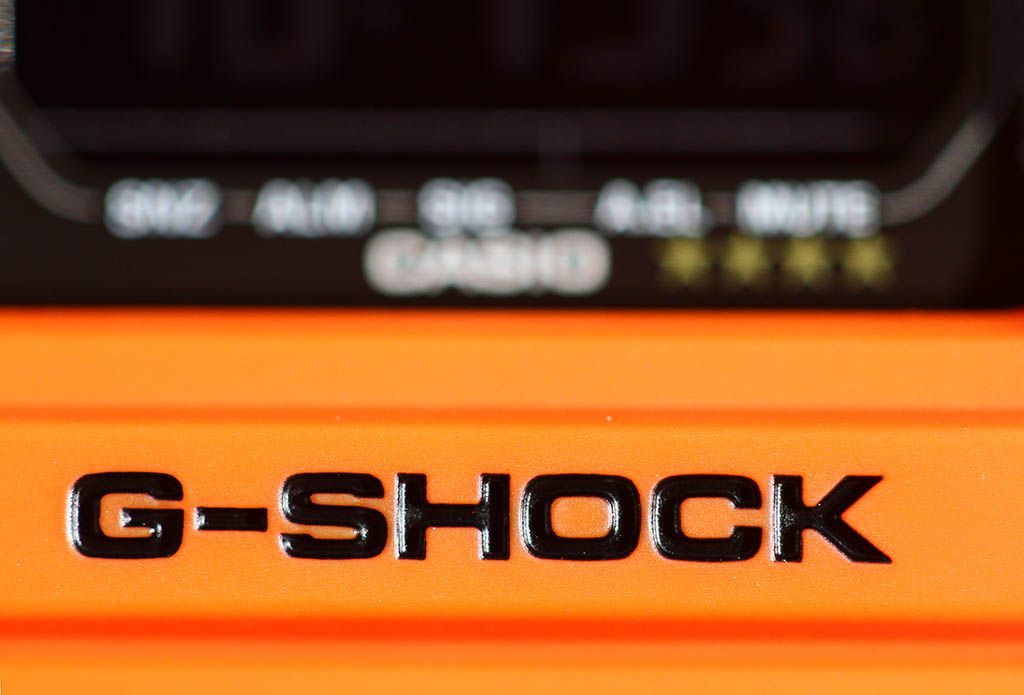






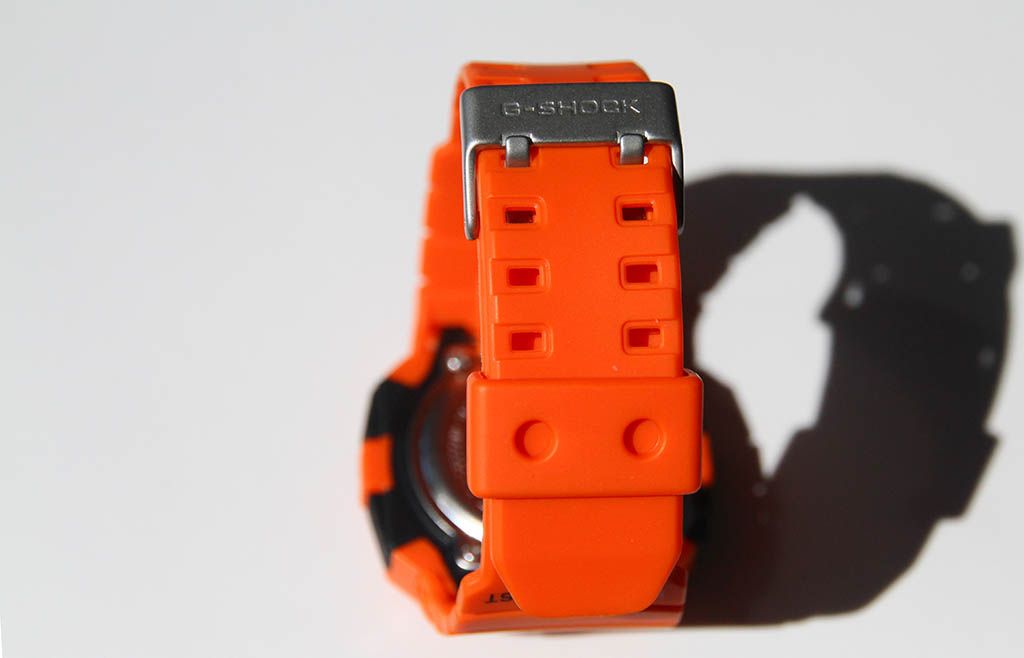



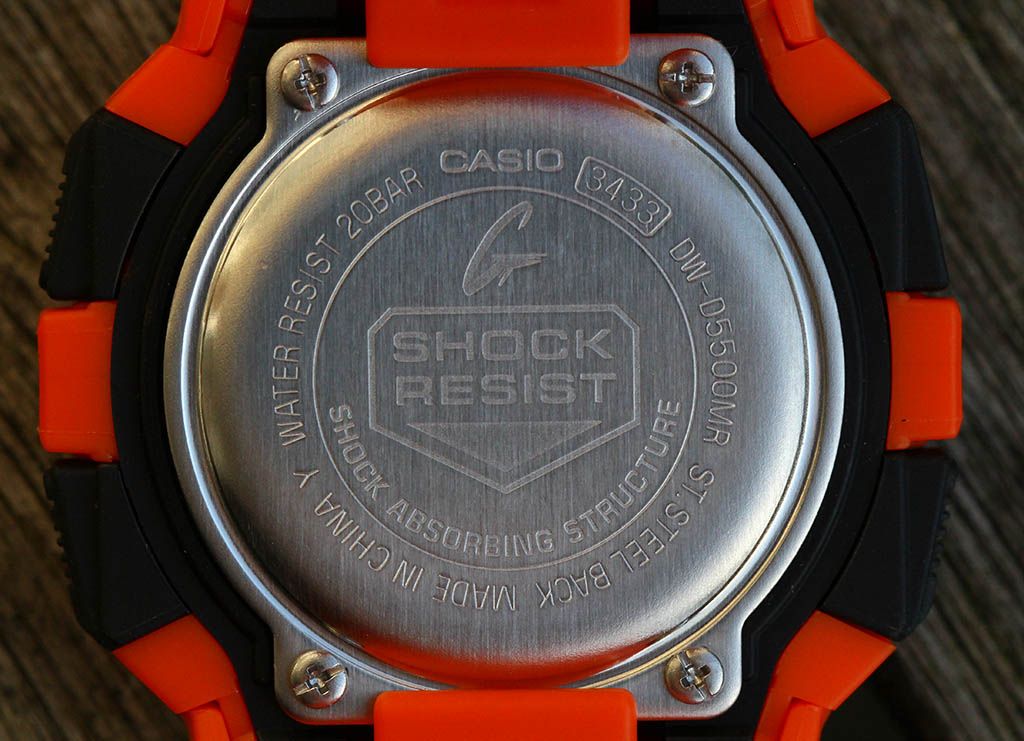
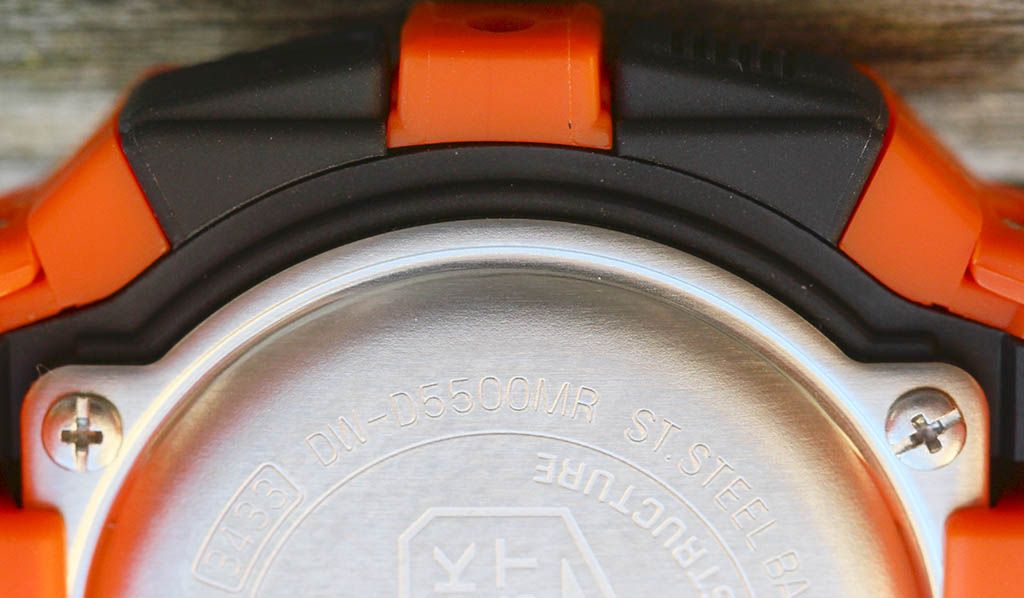
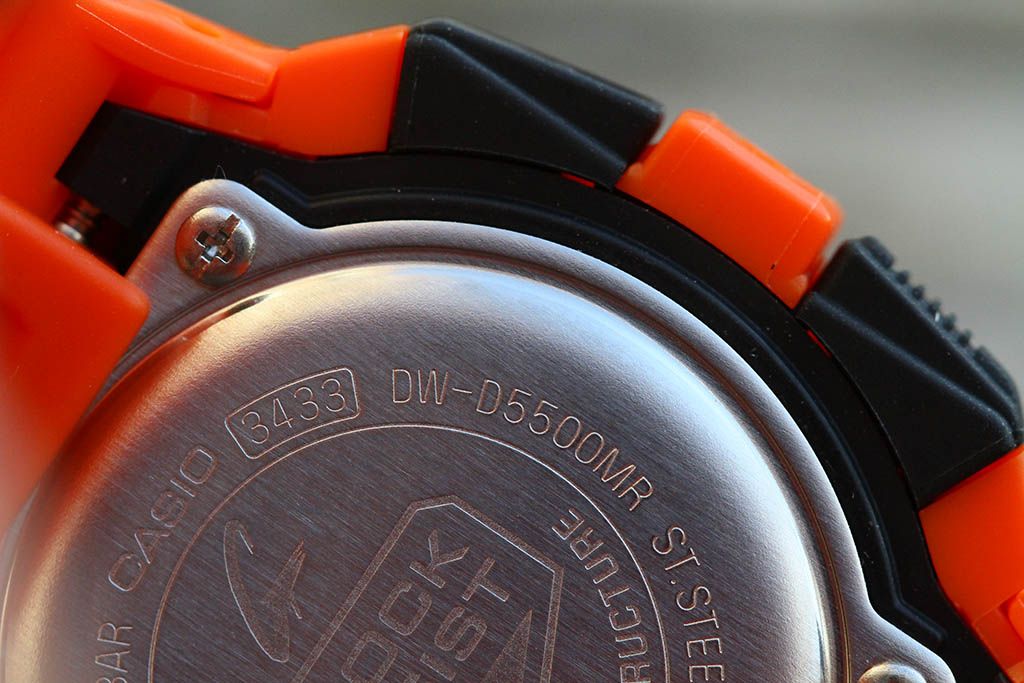


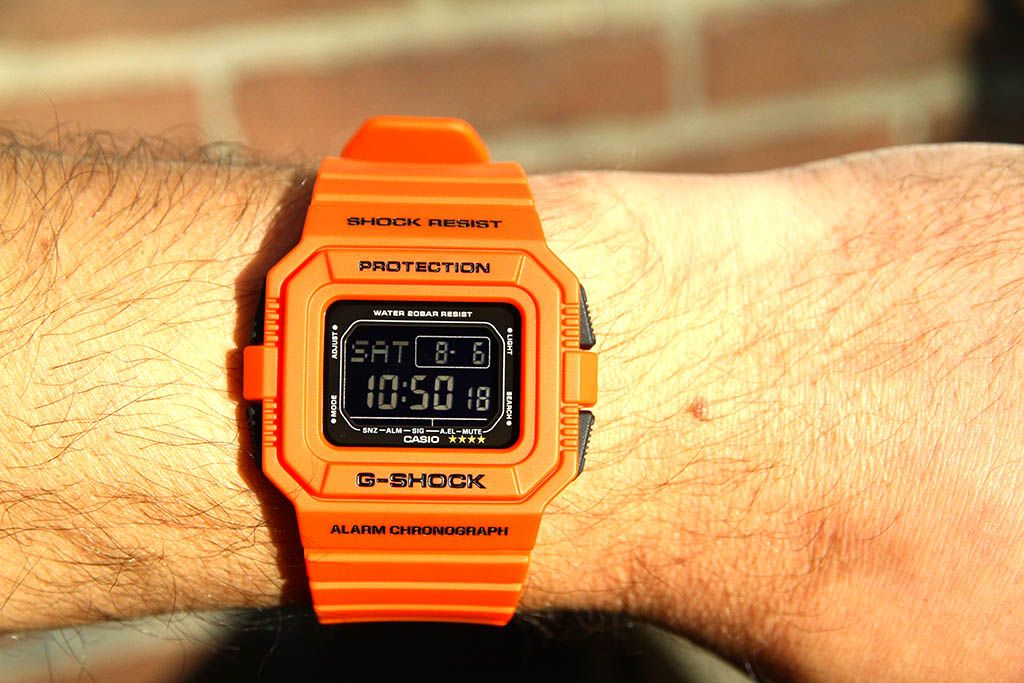
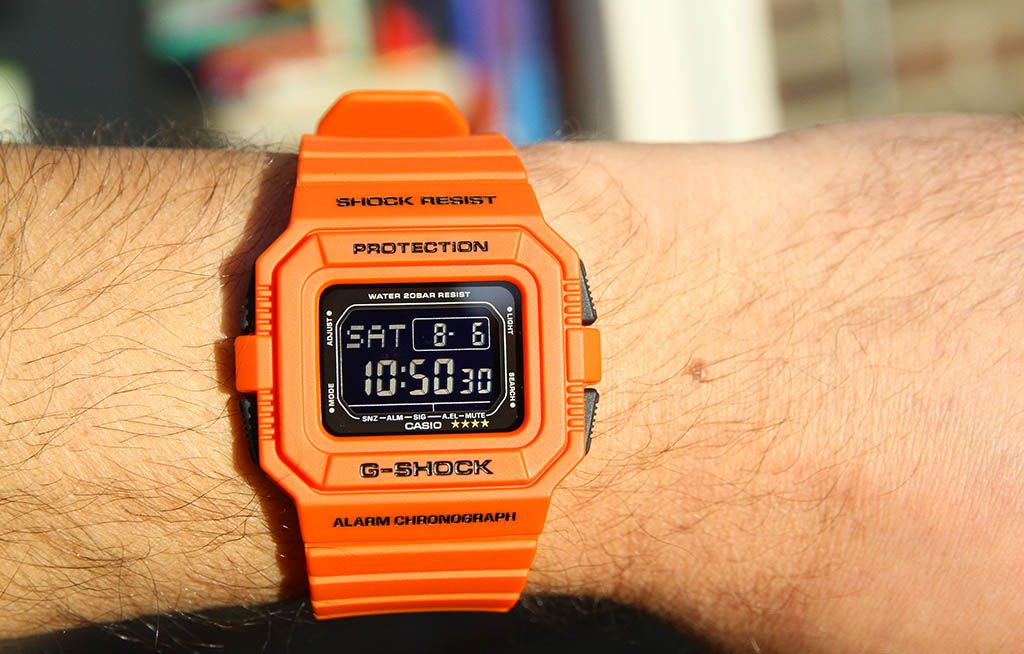

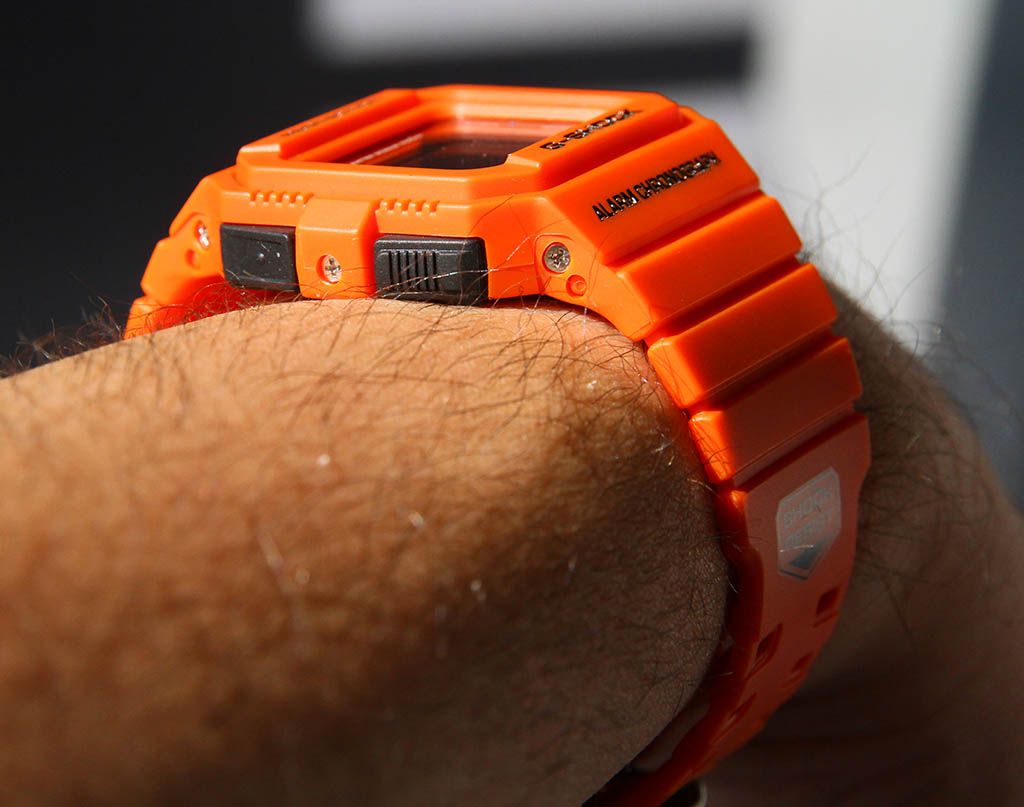
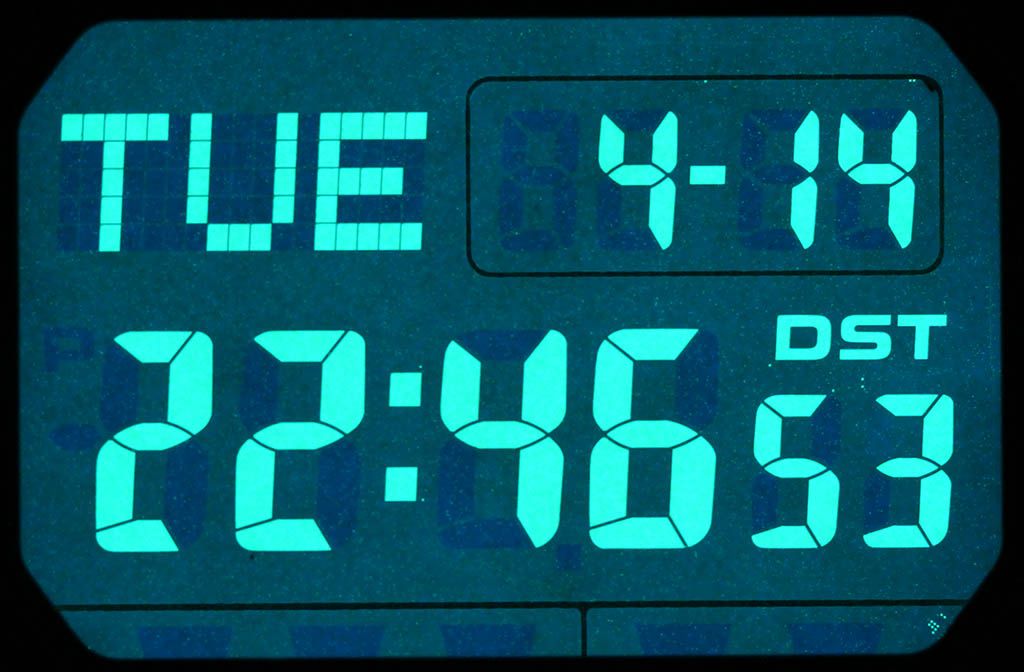
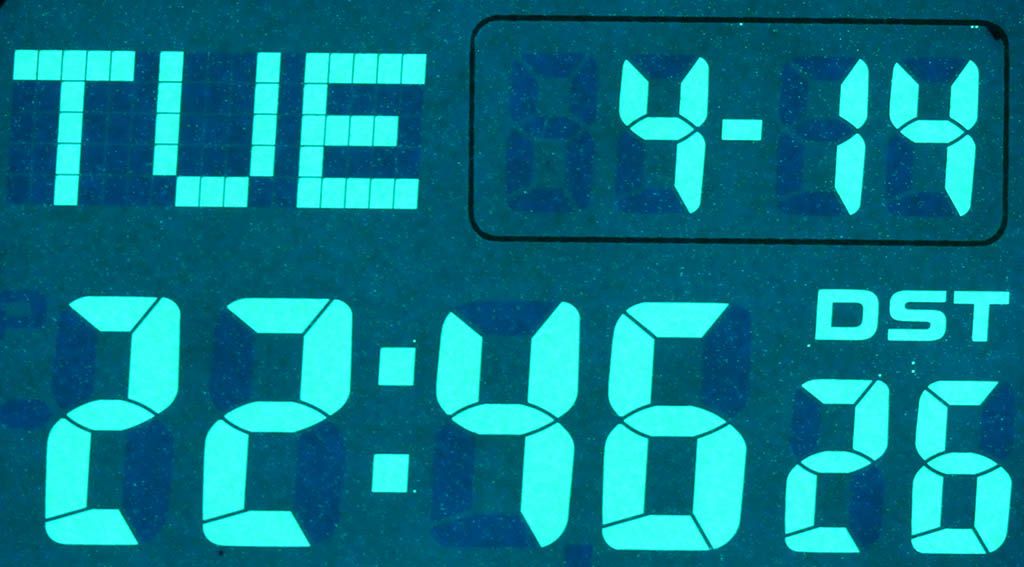
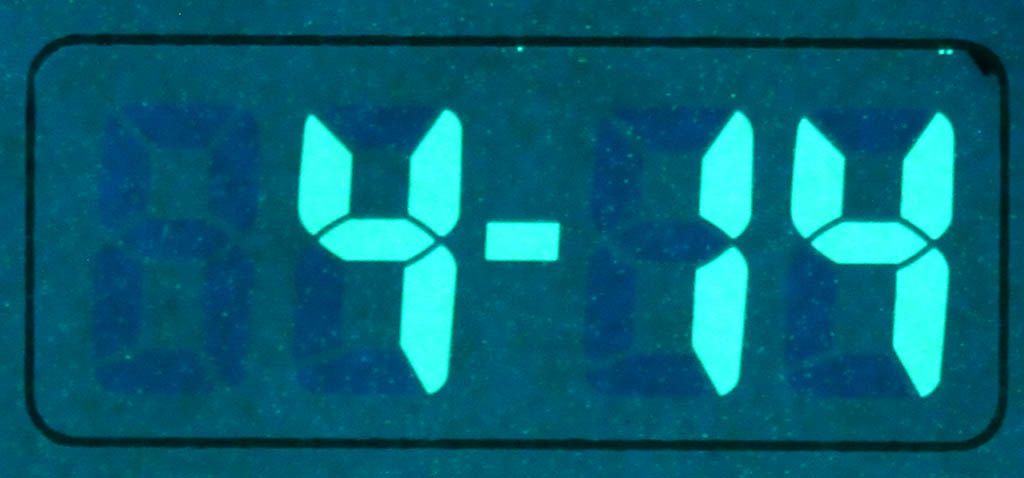
I just picked up one of these, and I have to say, it's absolutely stunning in person. I love it.
ReplyDelete